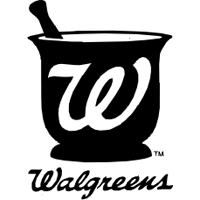WASHINGTON (AP) - Growth in U.S. sales of pharmaceuticals bounced back last year as rebates and low-cost generic drugs drove an increase in the number of prescriptions filled, according to data tracking firm IMS Health.
U.S. pharmaceutical sales climbed 5.1 percent to $300.3 billion in 2009 after two prior years of slower growth. IMS Health attributed the turnaround to increased filling of prescriptions, which grew at a 2.1 percent pace compared with 1 percent in 2008.
In response to the economic downturn, drugmakers have been offering co-pay coupons and other programs to help patients pay for their prescriptions. Those programs combined with offers on low-cost generic drugs from Wal-Mart, Walgreens and other retailers to drive sales.
"Some of those factors enabled demand to grow in what was overall a tough economic year," said Murray Aitken, senior vice president with IMS.
Also boosting sales were pharmaceutical price increases between 3 and 4 percent, roughly even with historical hikes.
While an improvement over recent years, 2009 pharmaceutical market growth remained at historically low levels due to fewer product launches and low-cost generics replacing older brand-name drugs.
Generic drugs, which often cost a fraction of branded products, made up 75 percent of all prescriptions filled last year. In 2004 generics made up just 57 percent of the market, according to IMS. The low-cost alternatives are launched after the patent on the original product expires or is successfully challenged in court.
Pharmaceutical companies have struggled for more than a decade to replace blockbuster drugs developed in the 1990s, leading to a recent spate of consolidation between companies like Pfizer and Wyeth.
Patent expirations on older medications put less of a dent in 2009 sales than in previous years, according to Aitken.
Another positive development for industry was expansion of specialty drugs, with sales accounting for 21 percent of the U.S. market, up from 7.5 in 2008. Specialty drugs include injectable, biotech medications to treat severe, chronic conditions like cancer and psoriasis.
"They tend to be more innovative and tend to bring more patient value and on that basis have higher prices," said Aitken.
Antipsychotic drugs like Eli Lilly's Zyprexa and AstraZeneca's Seroquel remained the top-selling class of medications with $14.6 billion in sales last year. Drugs to treat heart burn and high cholesterol made up the second and third best-selling classes of drugs.
In response to the economic downturn, drugmakers have been offering co-pay coupons and other programs to help patients pay for their prescriptions. Those programs combined with offers on low-cost generic drugs from Wal-Mart, Walgreens and other retailers to drive sales.
"Some of those factors enabled demand to grow in what was overall a tough economic year," said Murray Aitken, senior vice president with IMS.
Also boosting sales were pharmaceutical price increases between 3 and 4 percent, roughly even with historical hikes.
While an improvement over recent years, 2009 pharmaceutical market growth remained at historically low levels due to fewer product launches and low-cost generics replacing older brand-name drugs.
Generic drugs, which often cost a fraction of branded products, made up 75 percent of all prescriptions filled last year. In 2004 generics made up just 57 percent of the market, according to IMS. The low-cost alternatives are launched after the patent on the original product expires or is successfully challenged in court.
Pharmaceutical companies have struggled for more than a decade to replace blockbuster drugs developed in the 1990s, leading to a recent spate of consolidation between companies like Pfizer and Wyeth.
Patent expirations on older medications put less of a dent in 2009 sales than in previous years, according to Aitken.
Another positive development for industry was expansion of specialty drugs, with sales accounting for 21 percent of the U.S. market, up from 7.5 in 2008. Specialty drugs include injectable, biotech medications to treat severe, chronic conditions like cancer and psoriasis.
"They tend to be more innovative and tend to bring more patient value and on that basis have higher prices," said Aitken.
Antipsychotic drugs like Eli Lilly's Zyprexa and AstraZeneca's Seroquel remained the top-selling class of medications with $14.6 billion in sales last year. Drugs to treat heart burn and high cholesterol made up the second and third best-selling classes of drugs.


No comments:
Post a Comment